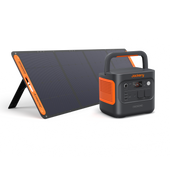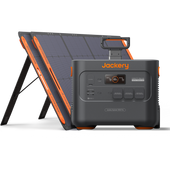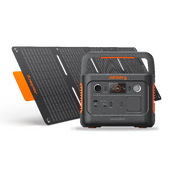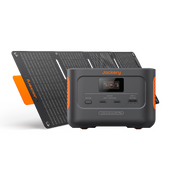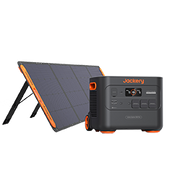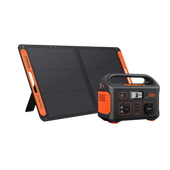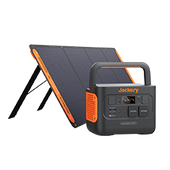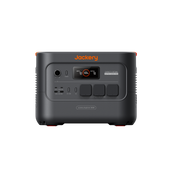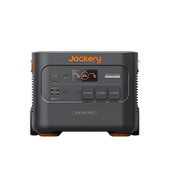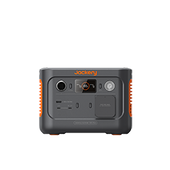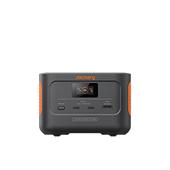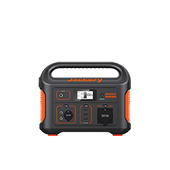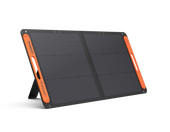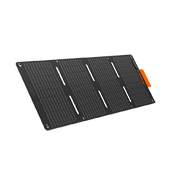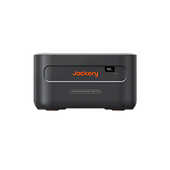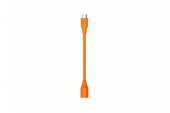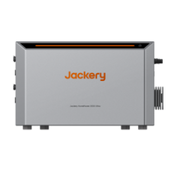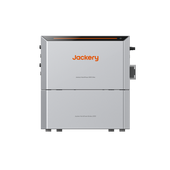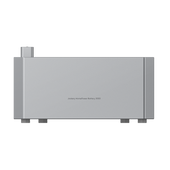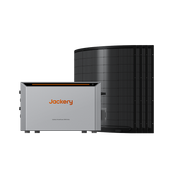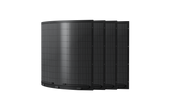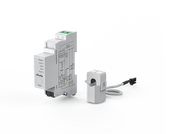Solar Power In The EU: Paving the Way for a Sustainable Future - Jackery EU
Solar energy has emerged as a crucial component of the sustainable energy transition in Europe. As the world seeks cleaner and more renewable power sources, solar energy has gained significant attention for its potential to mitigate climate change and reduce reliance on fossil fuels.
This article aims to delve into the realm of solar energy and solar generators in the EU, exploring its functioning, benefits, and the challenges it confronts. Join us as we unveil the path toward a greener and more sustainable future. So, grab your shades, and let's embark on this solar-powered adventure!

Principles Of Converting Sunlight Into Electricity Using Solar Panels
- Photovoltaic Effect: The photovoltaic effect is at the heart of solar energy. It consists of the generation of an electric current when certain materials, known as semiconductors, are exposed to sunlight.
- Solar Panels:Solar panels, also known as photovoltaic (PV) panels, enable converting sunlight into electricity. These panels consist of numerous solar cells made of semiconducting materials, typically silicon.
- Electron Excitation: When sunlight strikes the solar panel, it consists of tiny particles of energy called photons. These photons are absorbed by the semiconducting material within the solar cells, causing the electrons in the material to become excited and break free from their atoms.
- Electron Flow: The excited electrons flow through the semiconducting material, creating an electric current. This flow of electrons is captured by the conductive metal contacts on the solar cells, which are connected to an external circuit.
- Electricity Generation: The flow of electrons through the external circuit creates an electric current, which can be harnessed to power various devices or stored in batteries for later use. This is where the magic happens - sunlight is directly transformed into usable electricity without the need for any moving parts or fuel consumption.
- Inverter and Grid Integration: The electricity generated by solar panels is typically in the form of direct current (DC). Still, most electrical appliances and the power grid operate on alternating current (AC). Therefore, an inverter converts DC electricity into AC electricity, making it compatible with household or industrial power needs. In some cases, excess electricity generated by solar panels can be fed back into the power grid, allowing for a two-way energy flow.
- Monitoring and Control: Advanced solar energy systems often incorporate monitoring and control mechanisms. These systems keep track of energy production, optimize the efficiency of solar panels, and ensure the safety and stability of the entire solar power system.
Benefits Of Solar Energy
1. Renewable and Abundant Sources of Energy
2. Low Carbon Emissions and Environmental Impacts
3. Reduced Dependence on Fossil Fuels
4. Off-Grid Electricity Generation
Introducing Jackery Solar Generator 1000 Pro And Jackery Solar Generator 1500 Pro
Jackery Solar Generator 1500 Pro

Jackery Solar Generator 1500 Pro
Jackery Solar Generator 1000 Pro

Jackery Solar Generator 1000 Pro
Challenges Of Solar Energy In The EU
1. Insufficient or Limited Policy Support
2. Permitting Challenges
3. Grid Congestion
4. Social and Economic Challenges
EU's Efforts and Initiatives For Solar Energy Deployment
1. Auction Schemes
2. Auction Optimization
3. Support Scheme Extensions
4. Infrastructure Development
5. Local Manufacturing and Job Training
6. Market Design and Consumer Protection
The EU acknowledges the need for an efficient and well-designed electricity market that facilitates the deployment of renewable energy sources. Ongoing discussions focus on reforming the electricity market design to ensure energy security, encourage investment in flexible resources, and promote the integration of renewables. By involving all relevant stakeholders in the reform process, the EU aims to develop market frameworks that support renewable energy expansion while maintaining investor confidence.

Solar energy holds great promise as a sustainable energy source in Europe. The renewable nature ensures low carbon emissions and reduced dependence on fossil fuels.
However, some challenges, such as inadequate support schemes, lengthy permitting procedures, and grid congestion, need to be addressed. The EU is actively working towards overcoming these challenges through policy support, regulatory reforms, and infrastructure development.
Under these efforts, Jackery plays a significant role in paving the way for a sustainable future in the EU, ensuring a cleaner and greener energy landscape for future generations.
Best-selling Jackery Solar Generator
Hurry up! Sale ends once the timer hits zero



